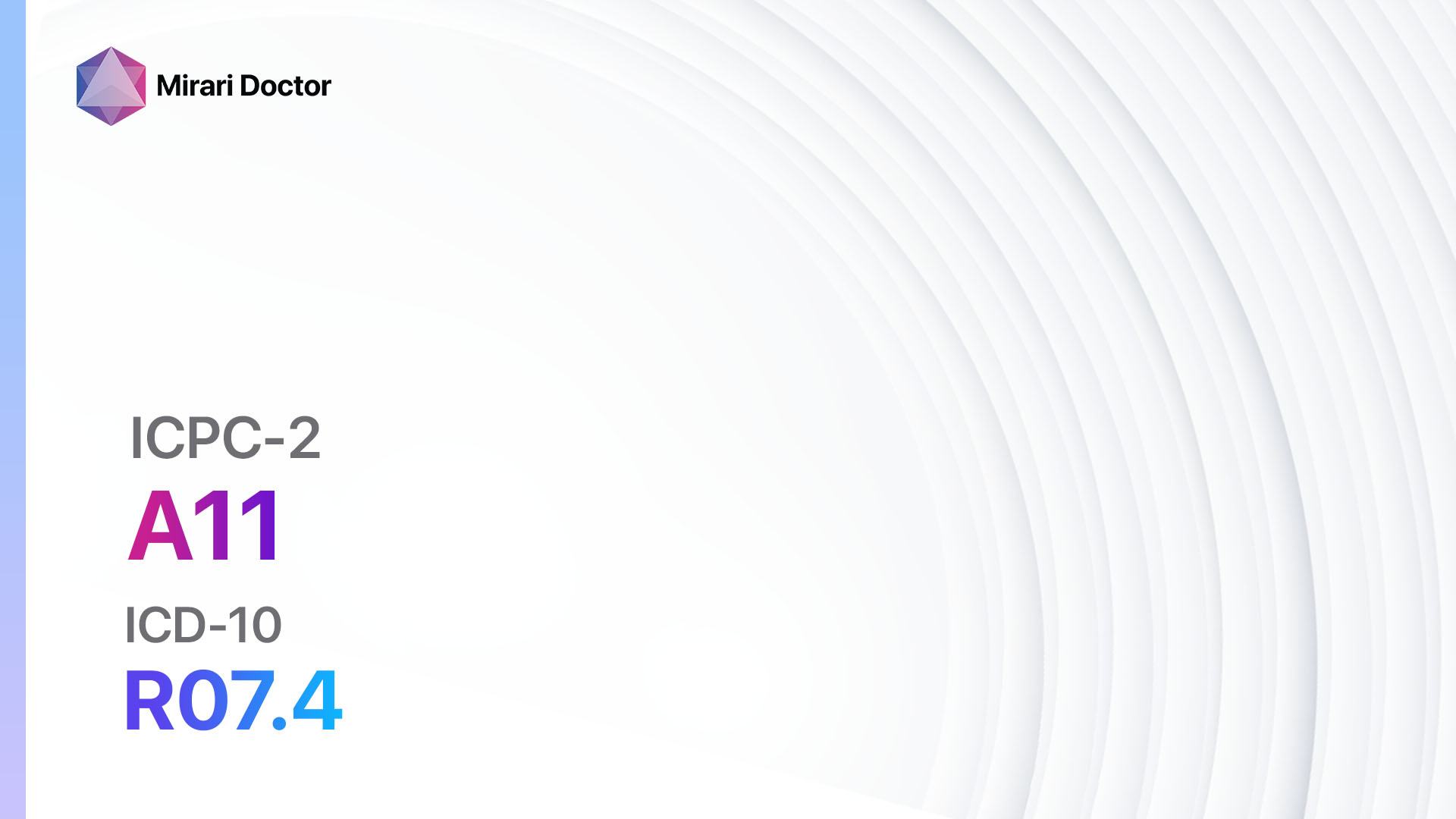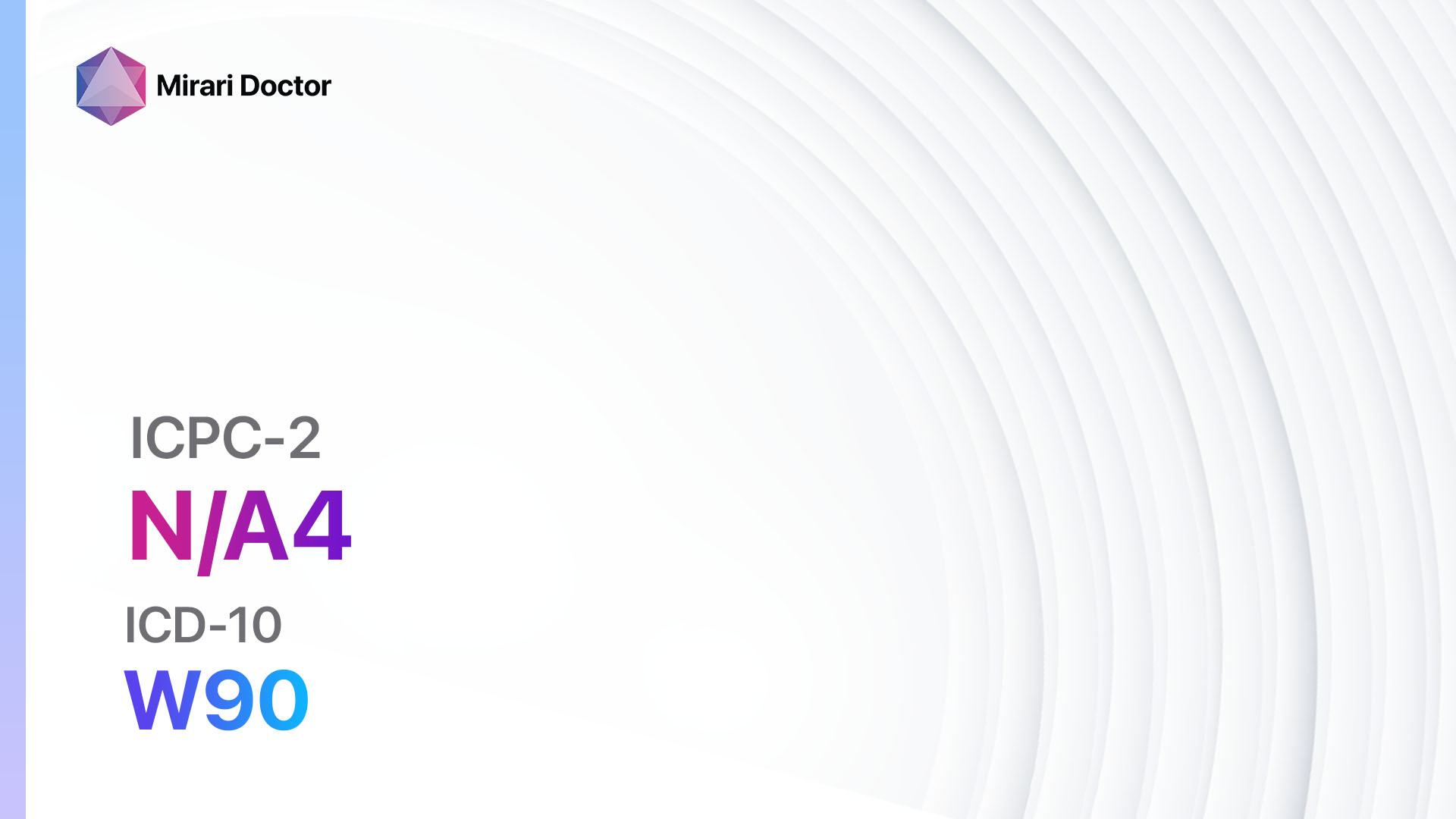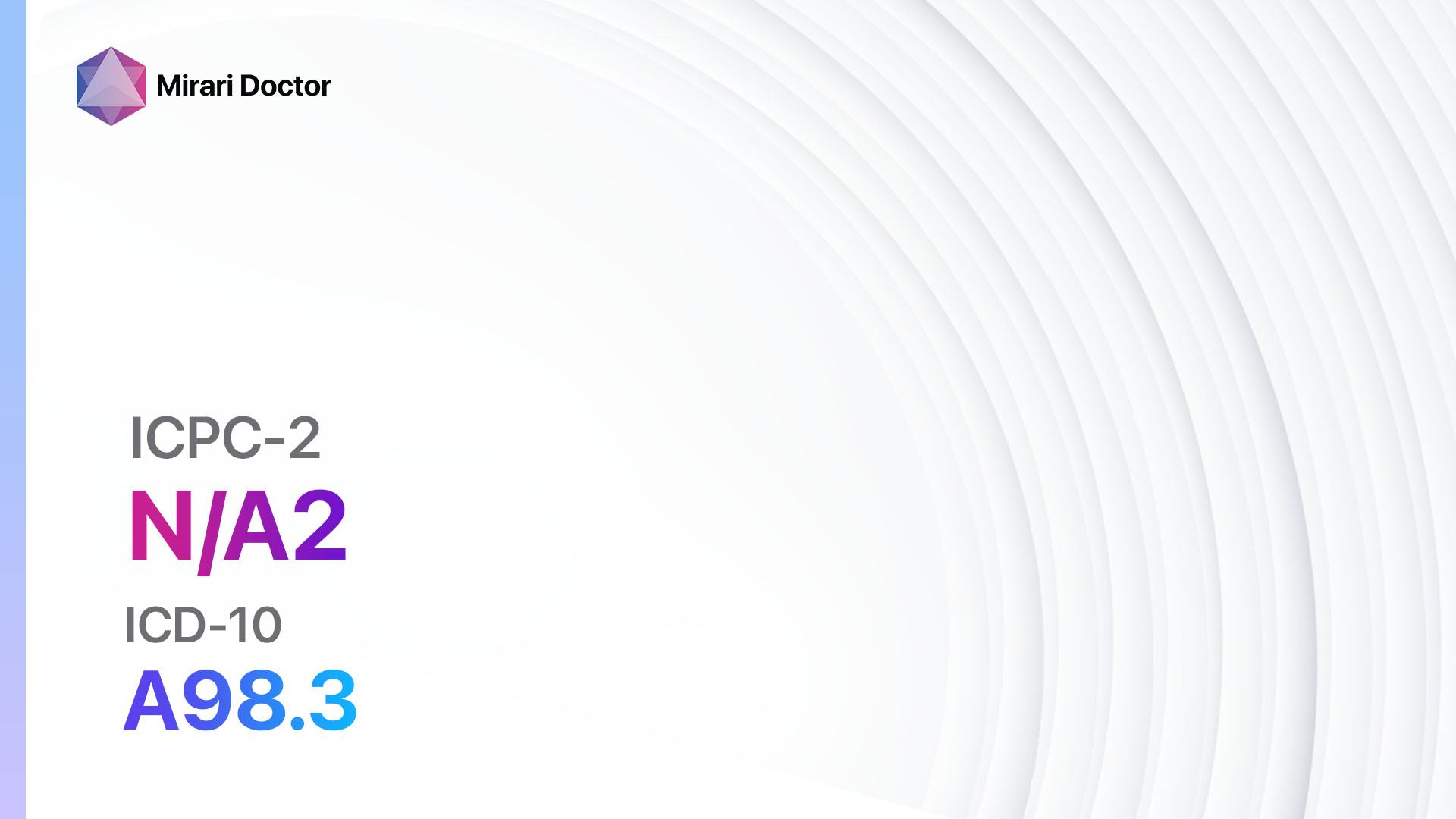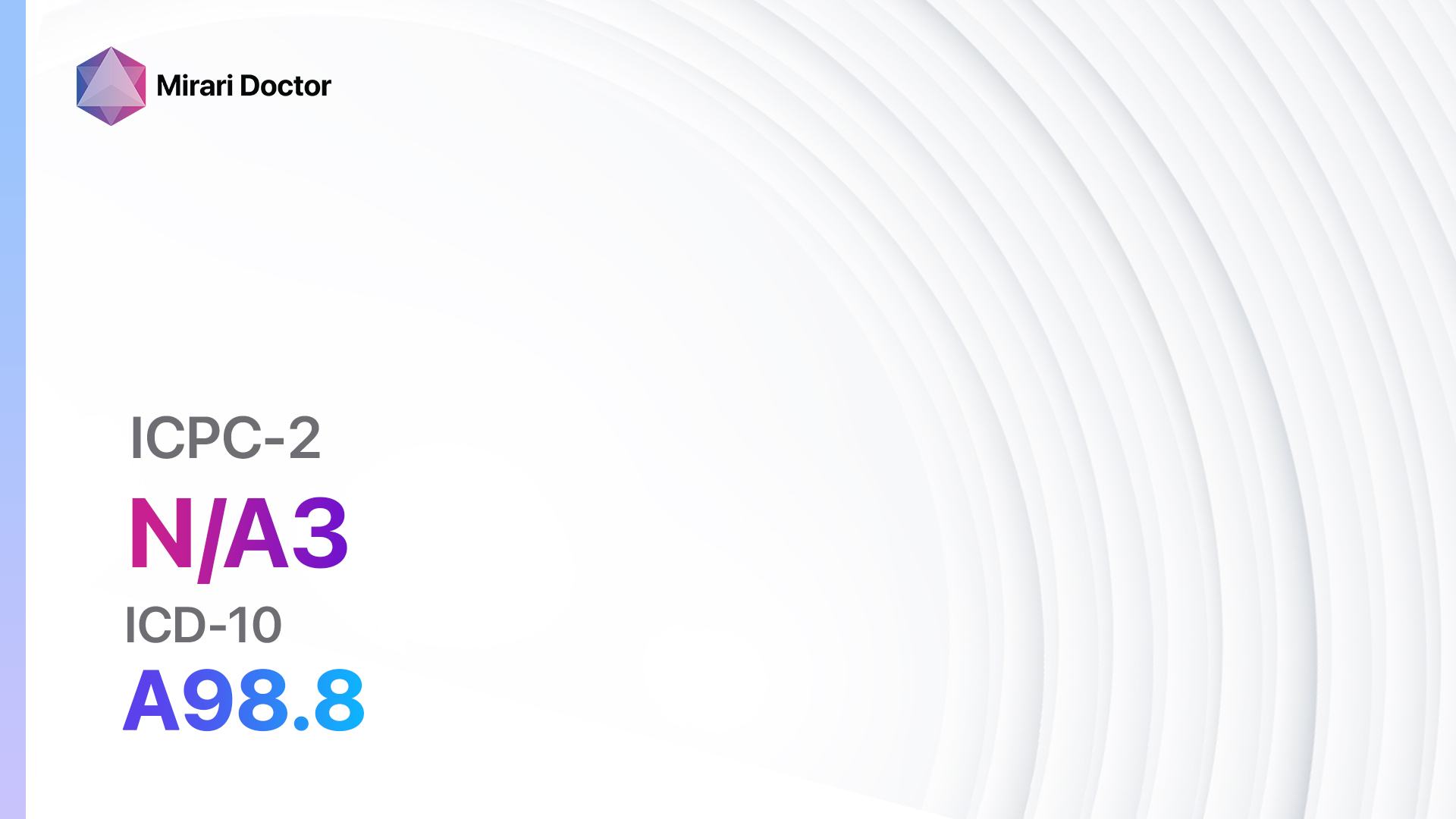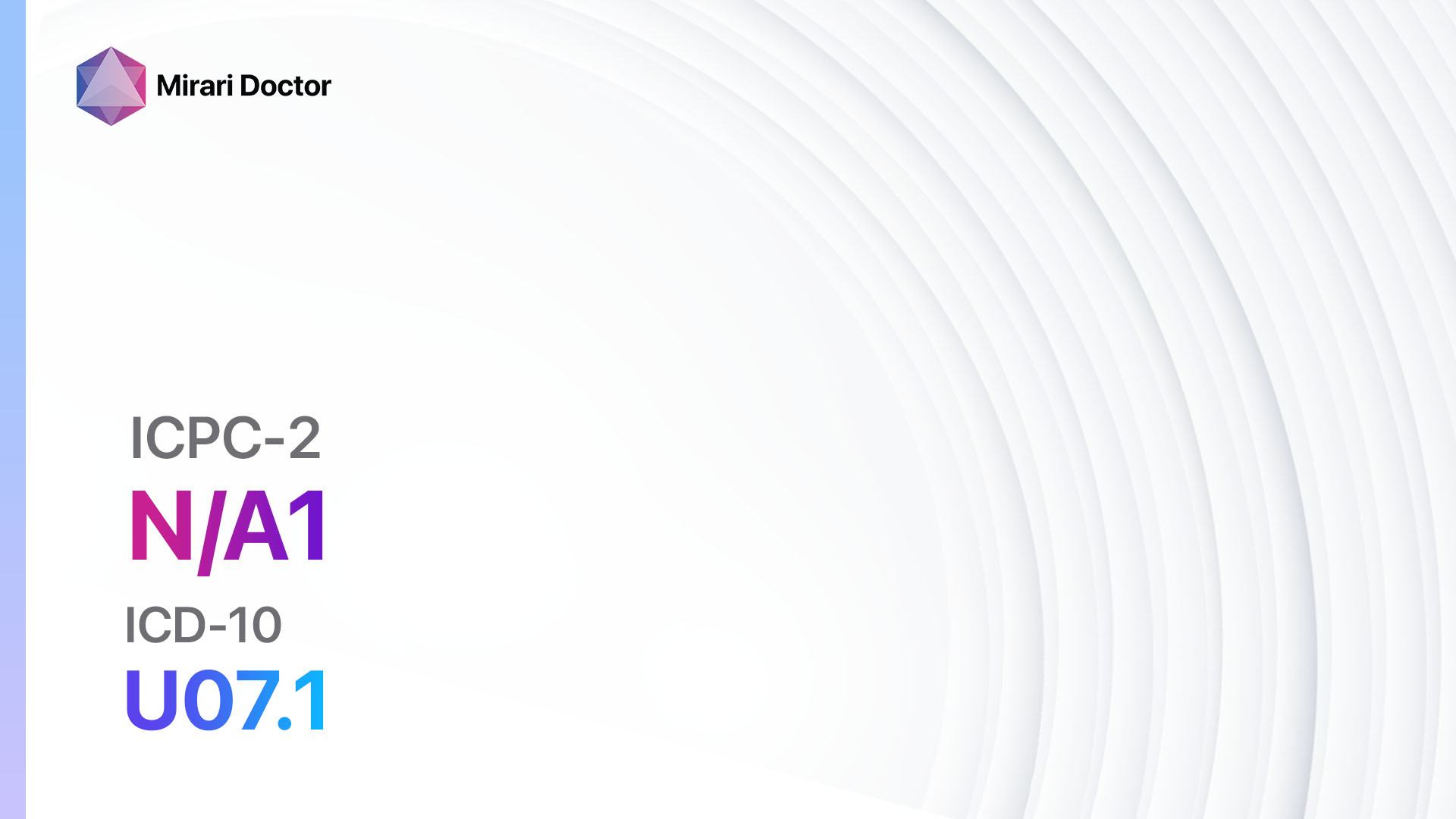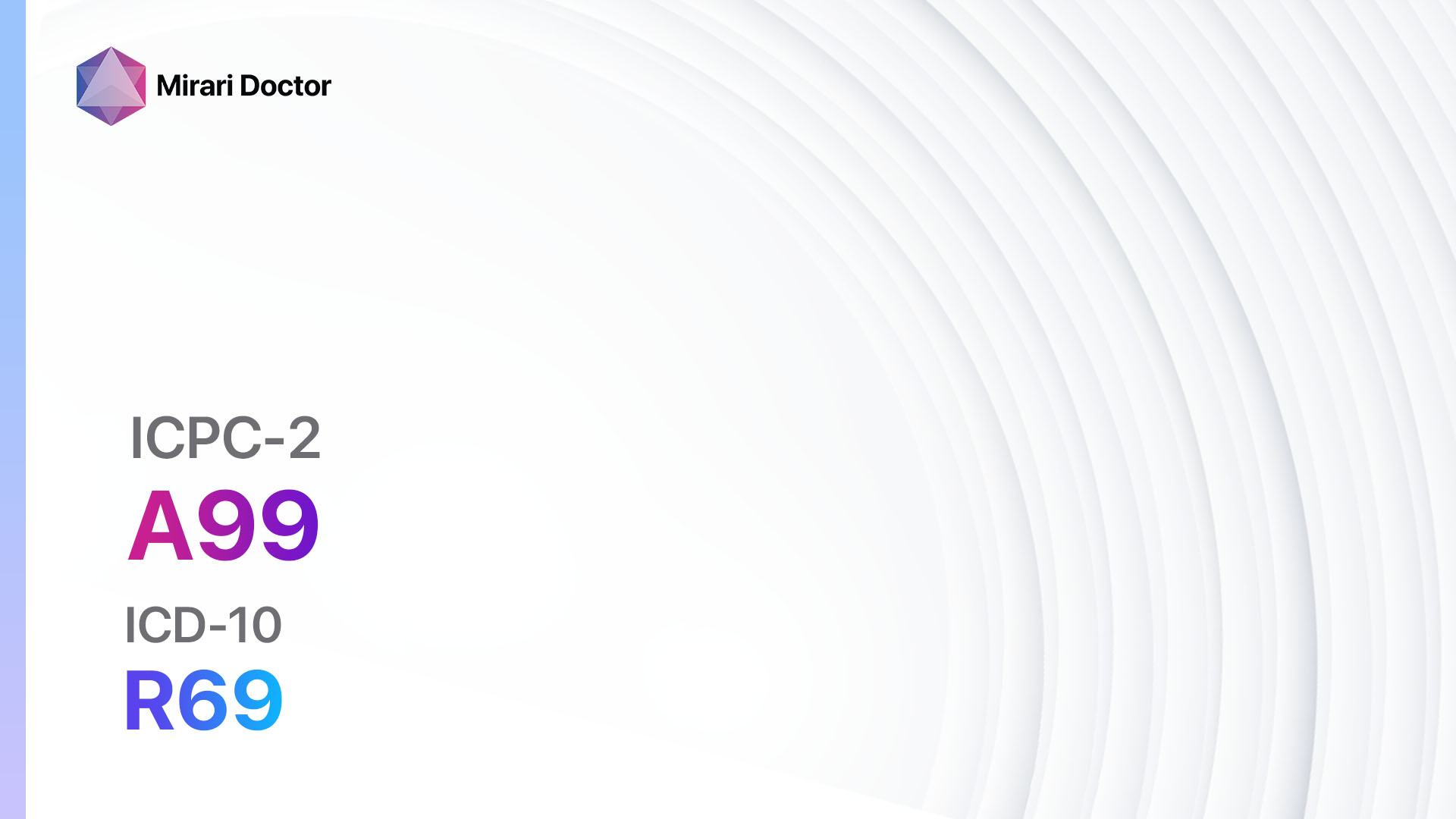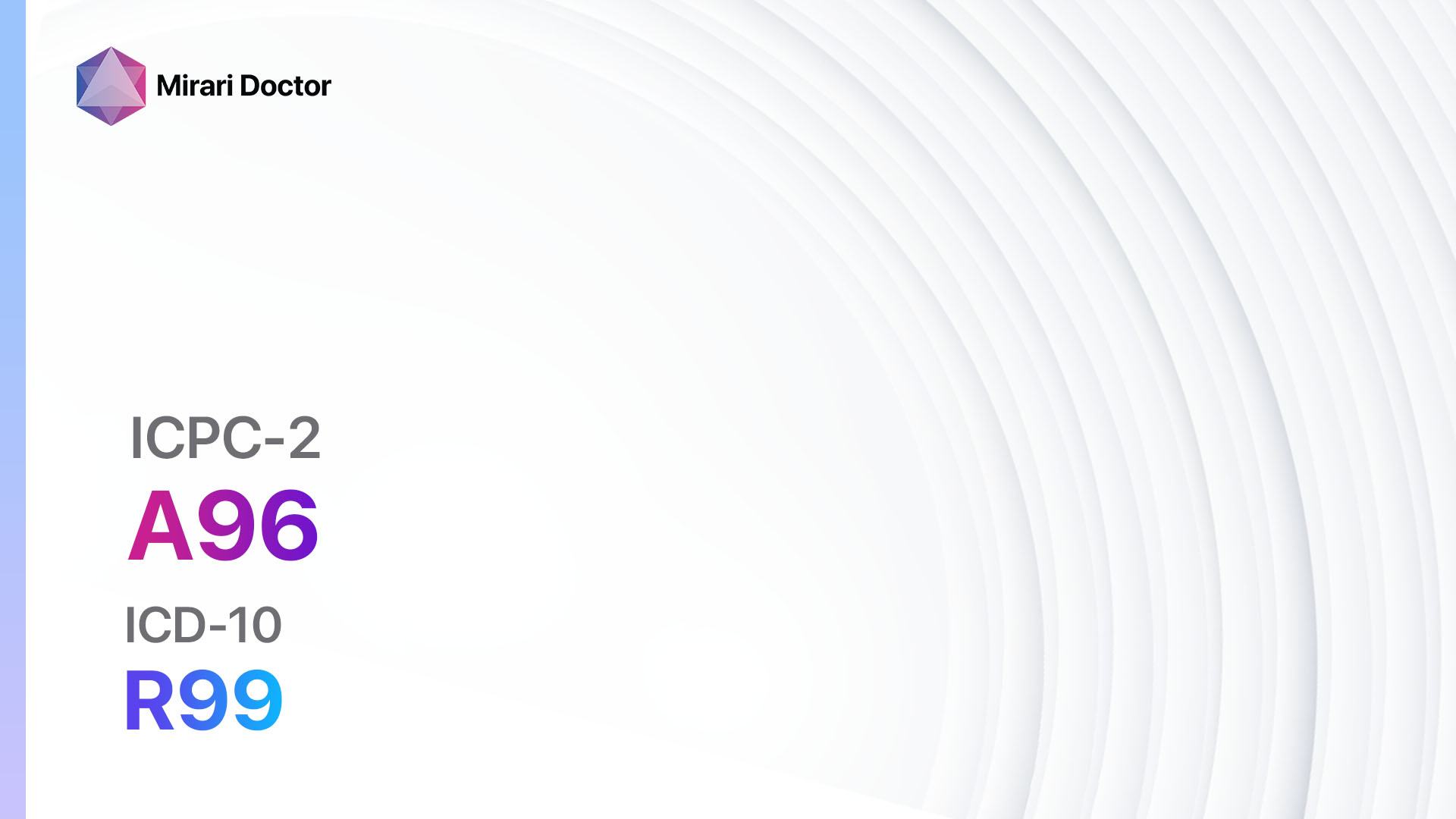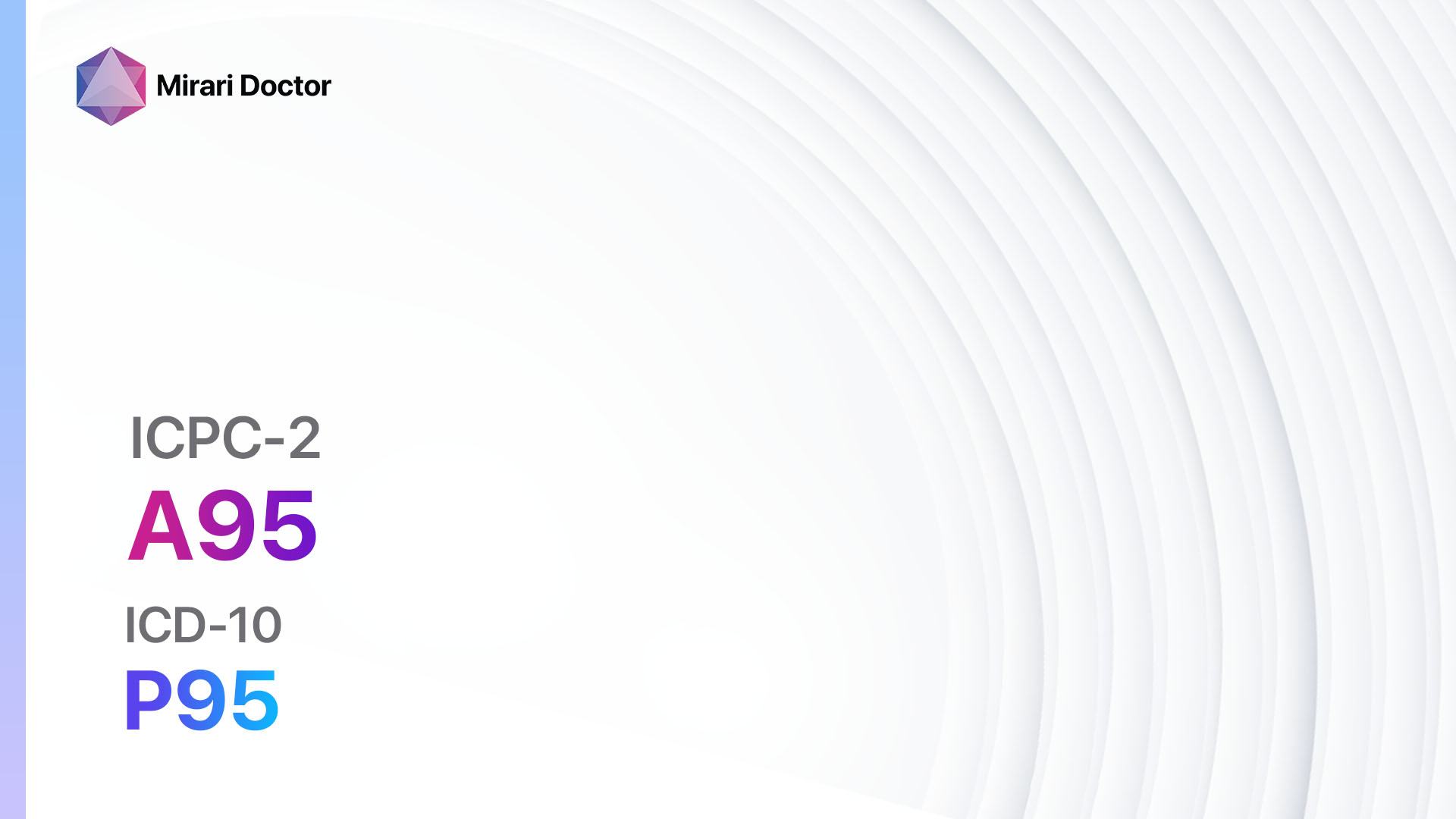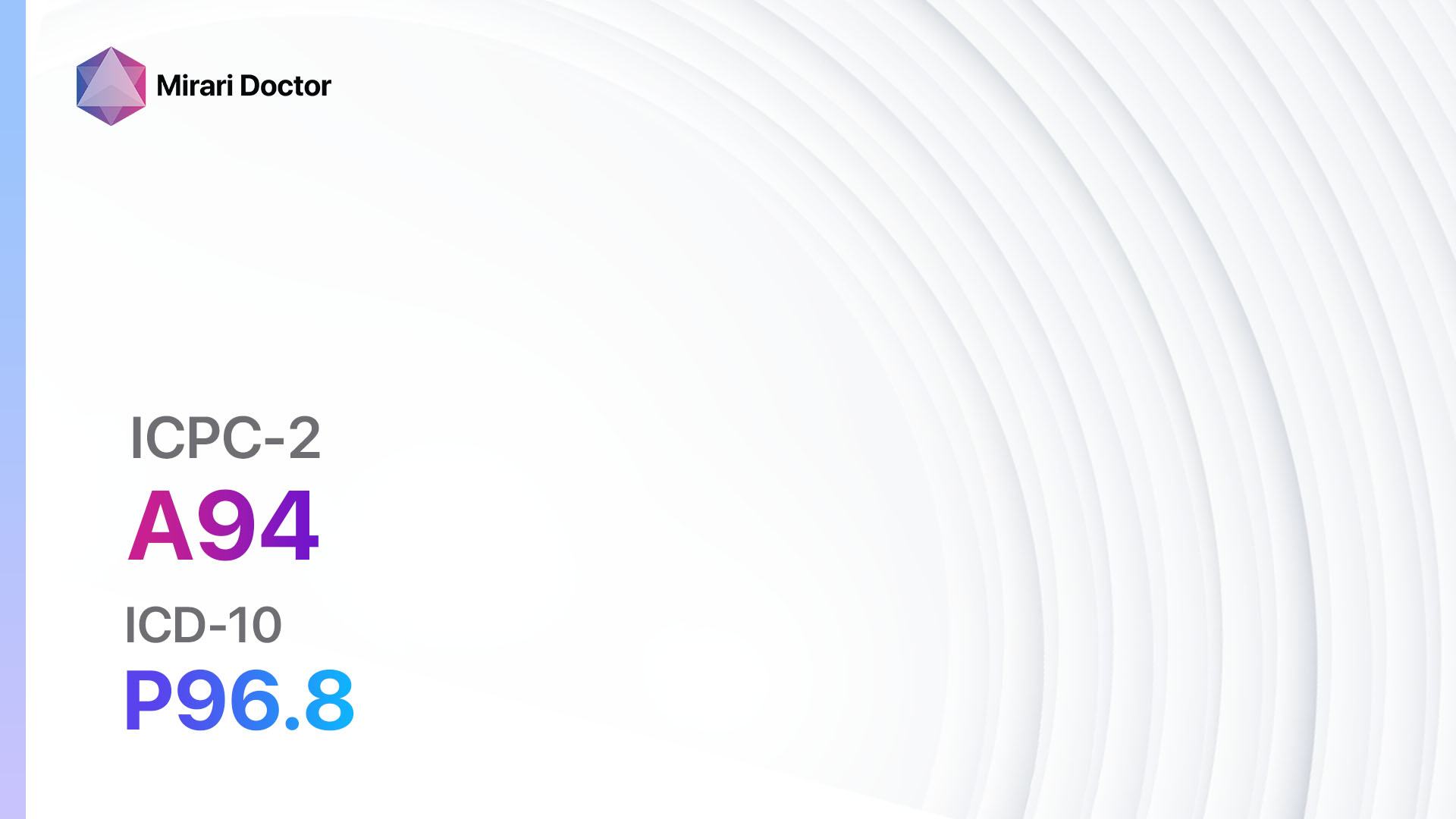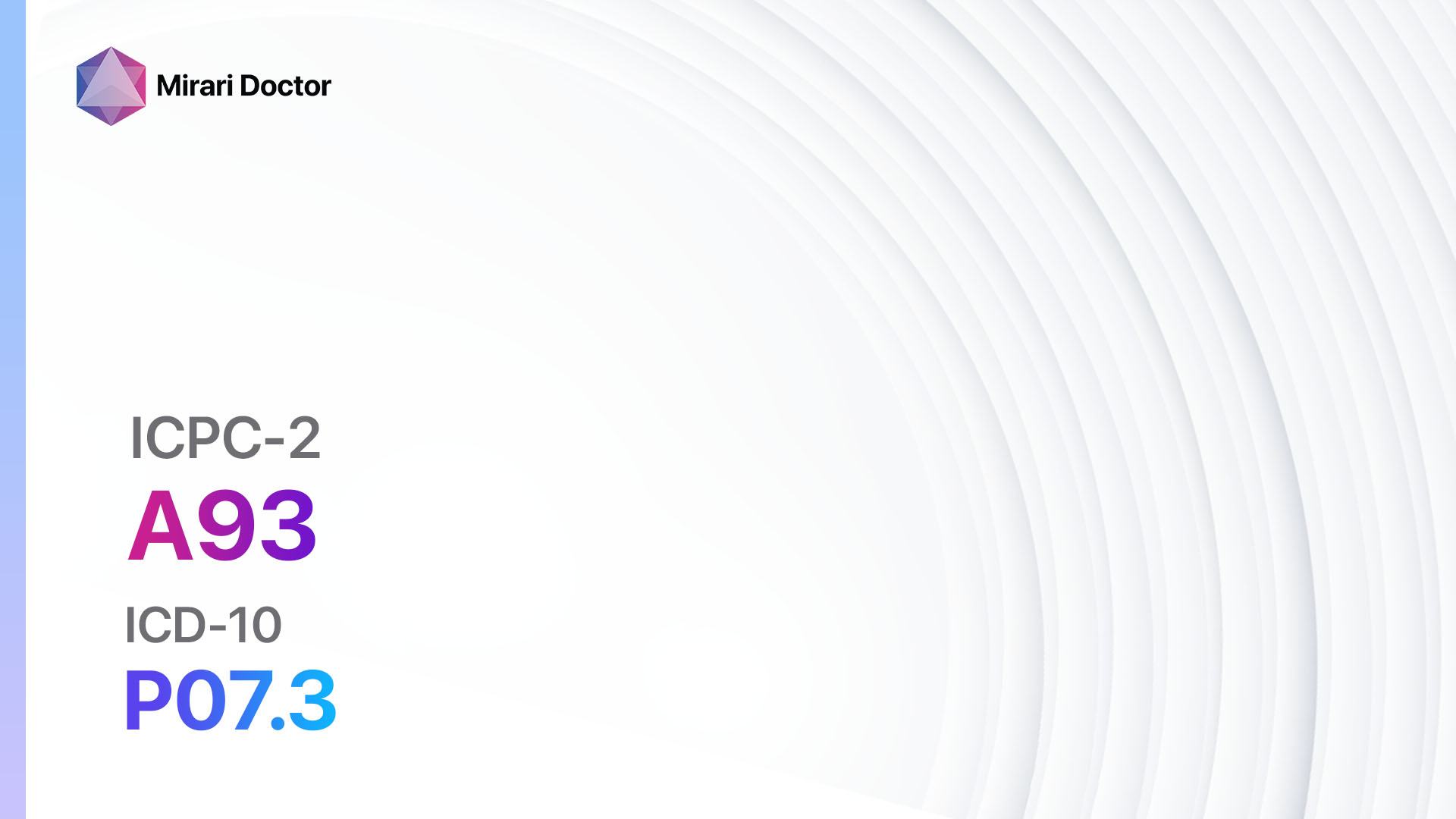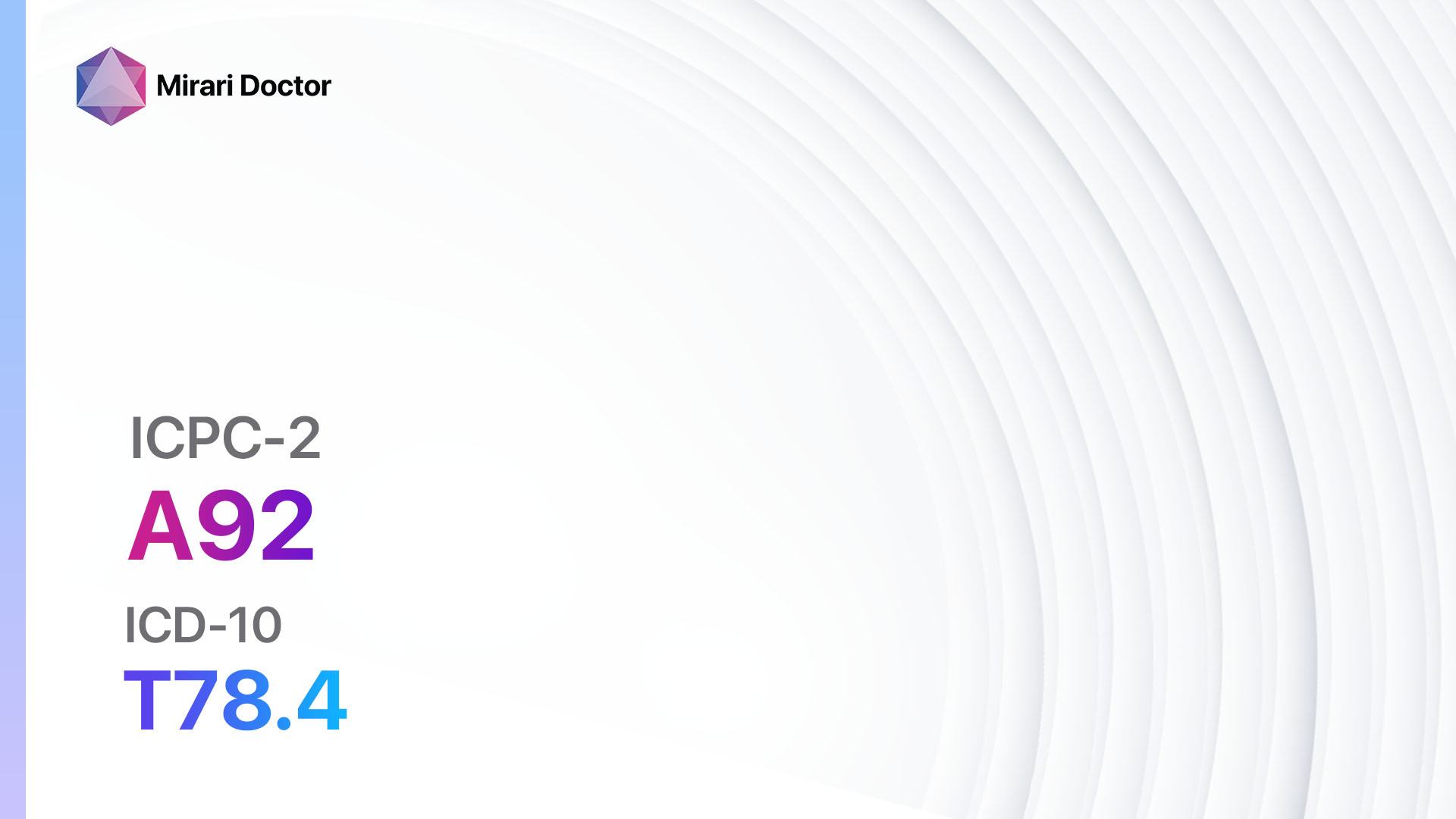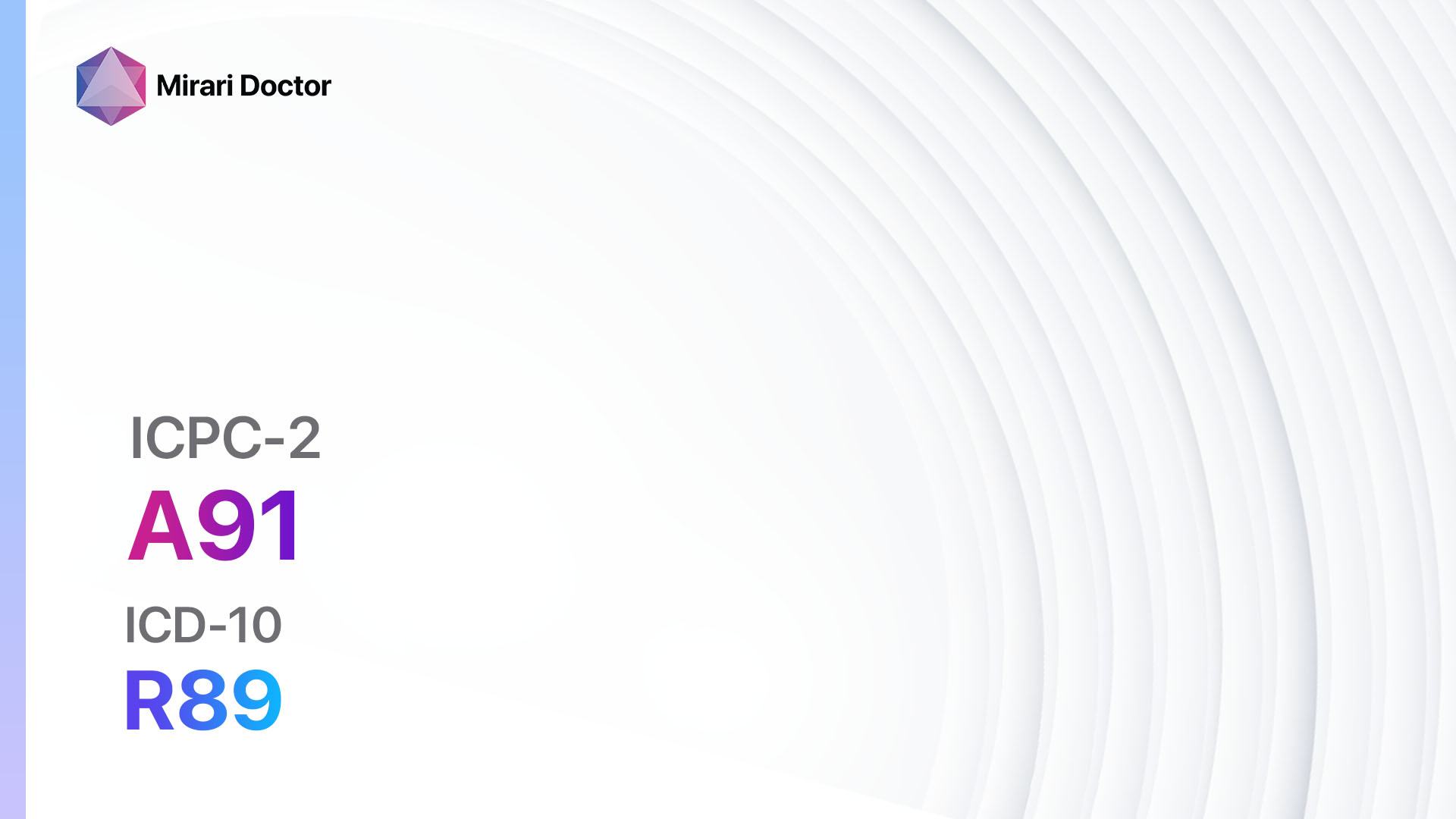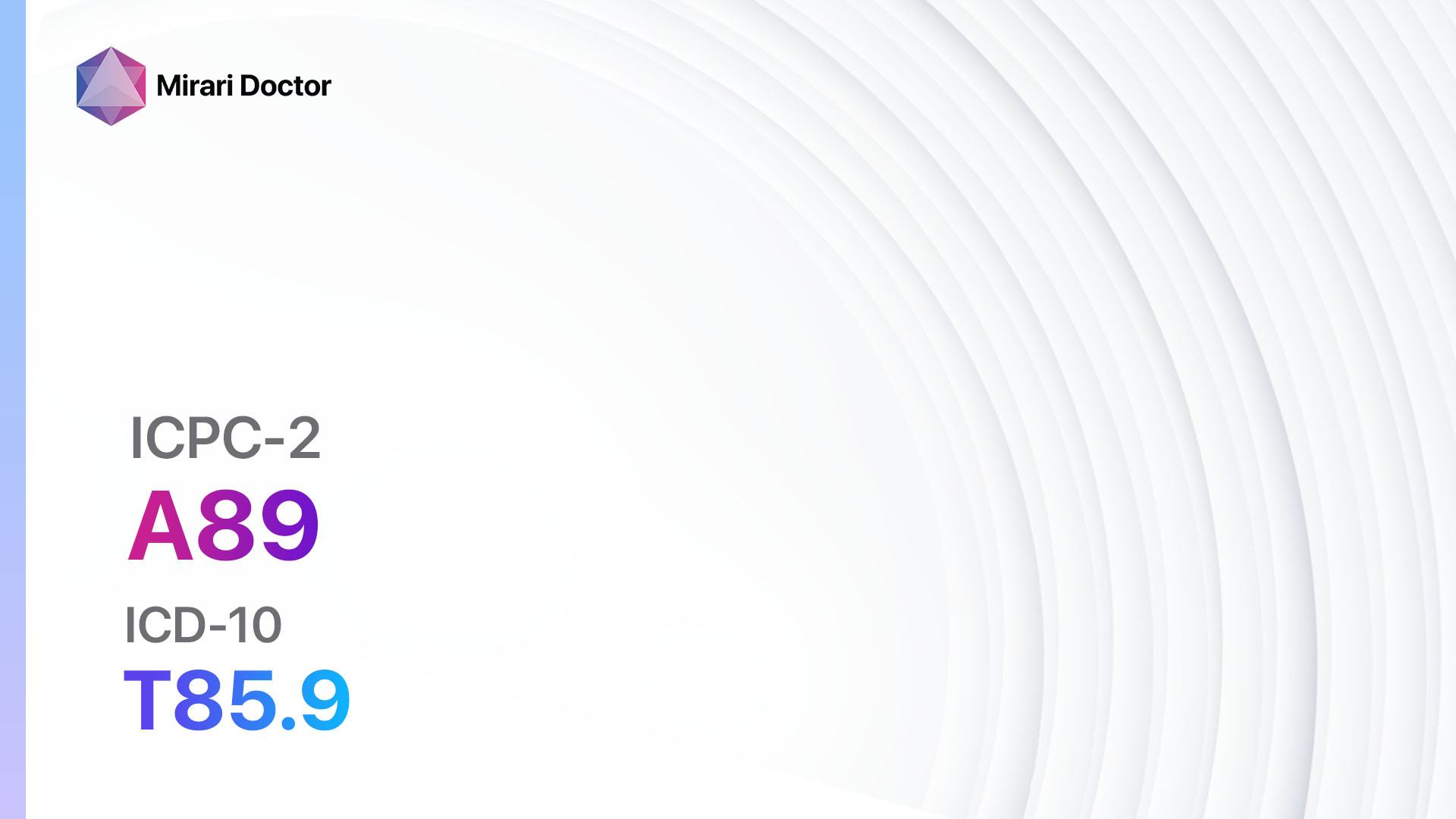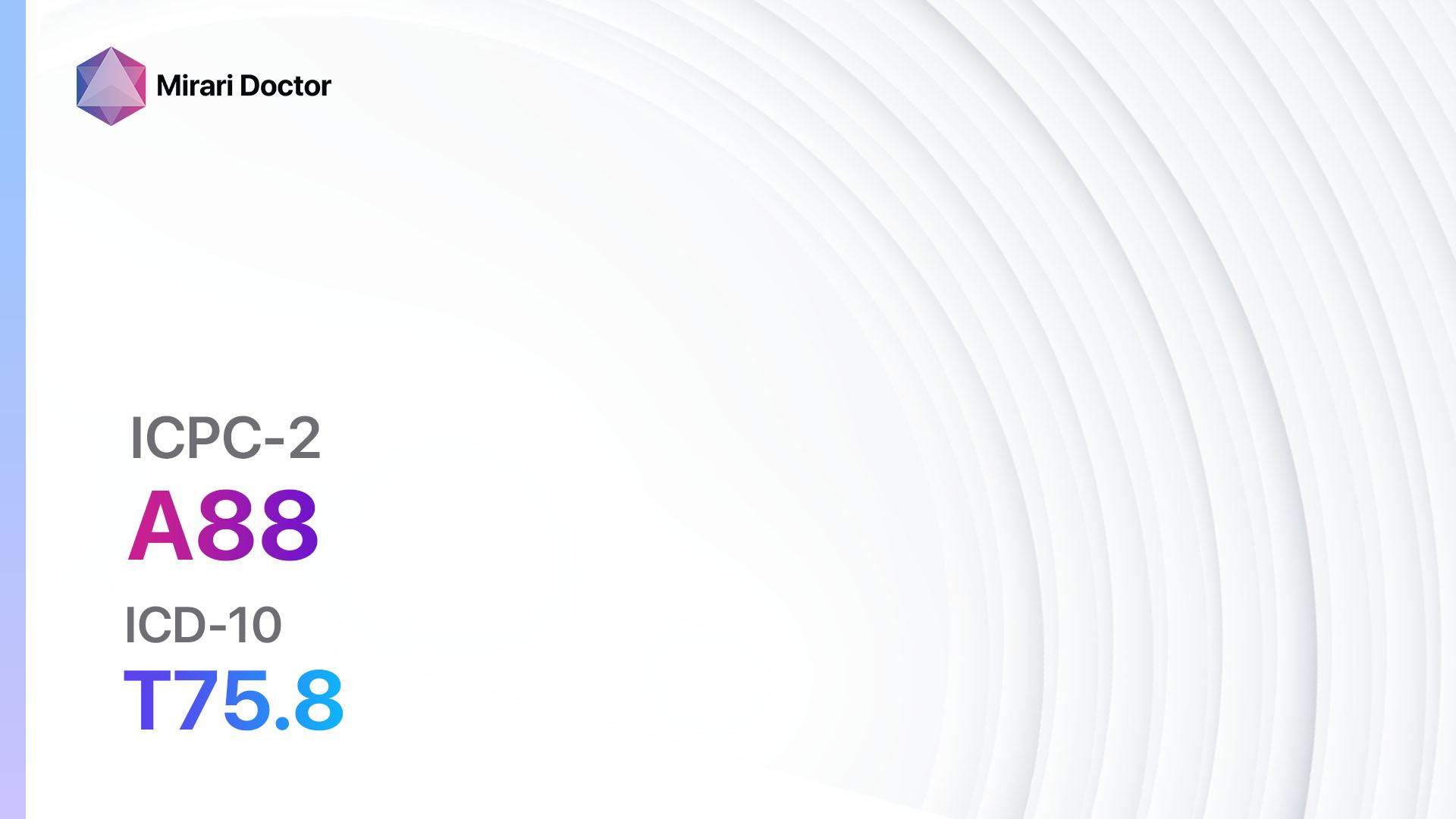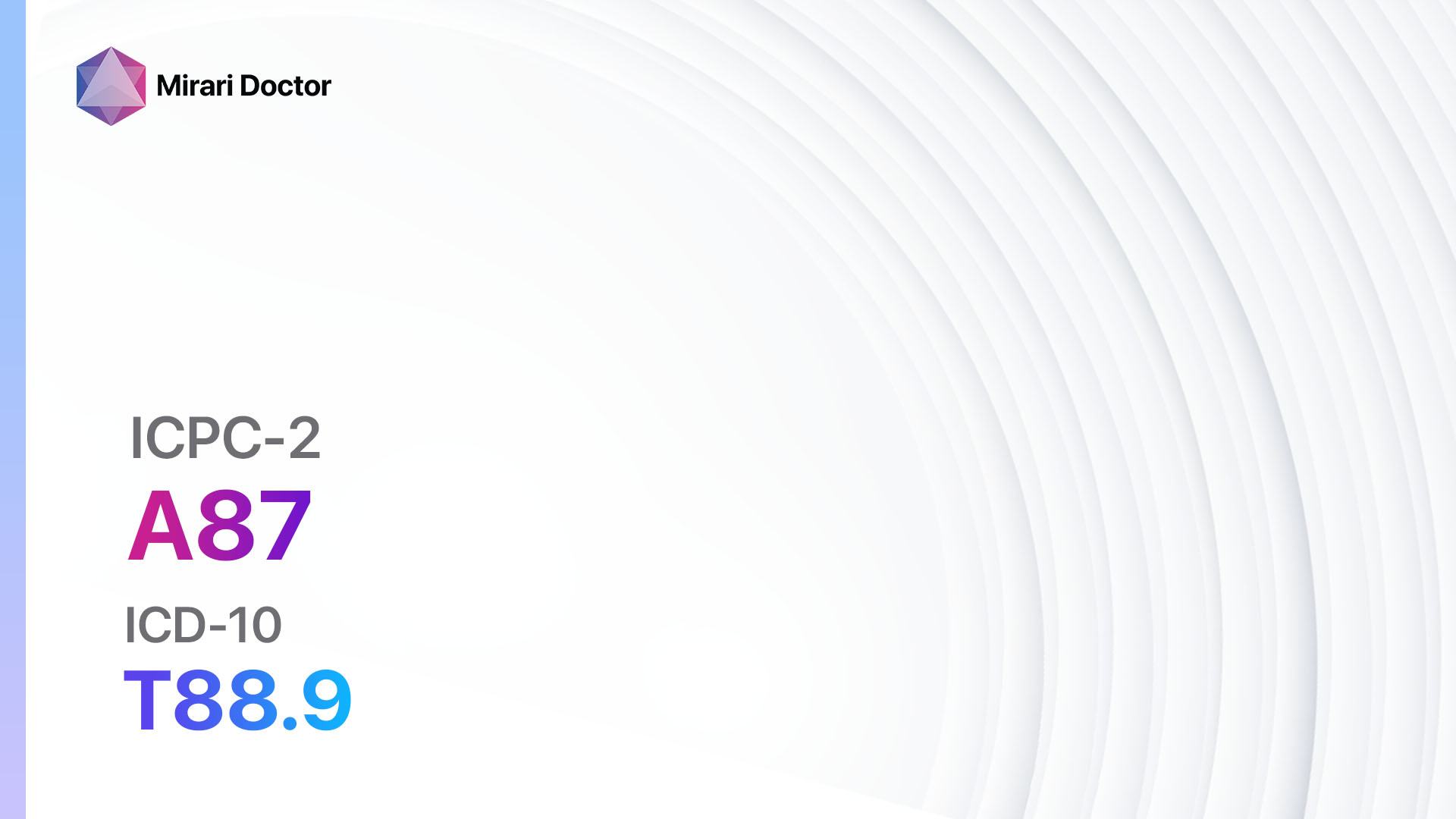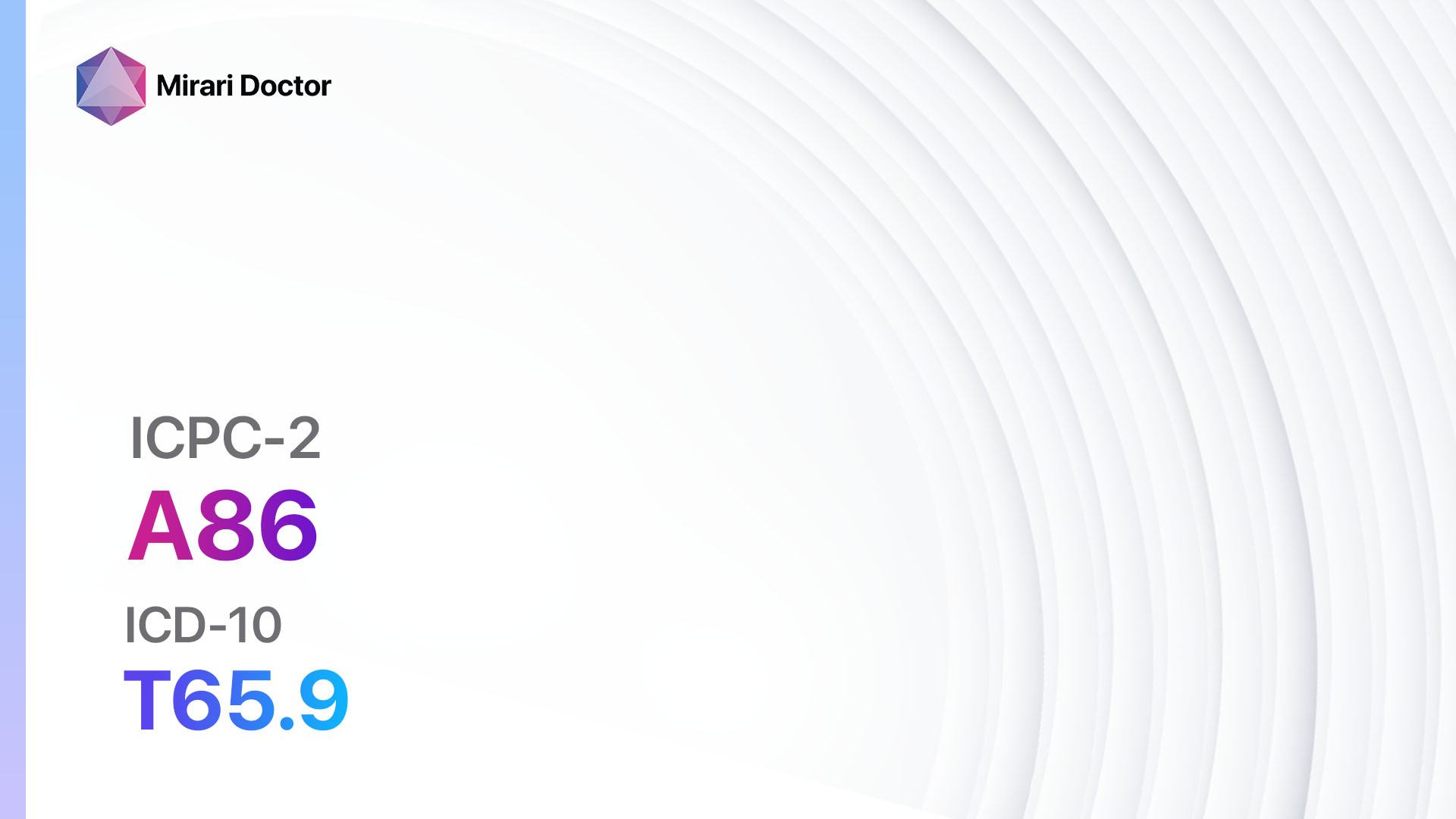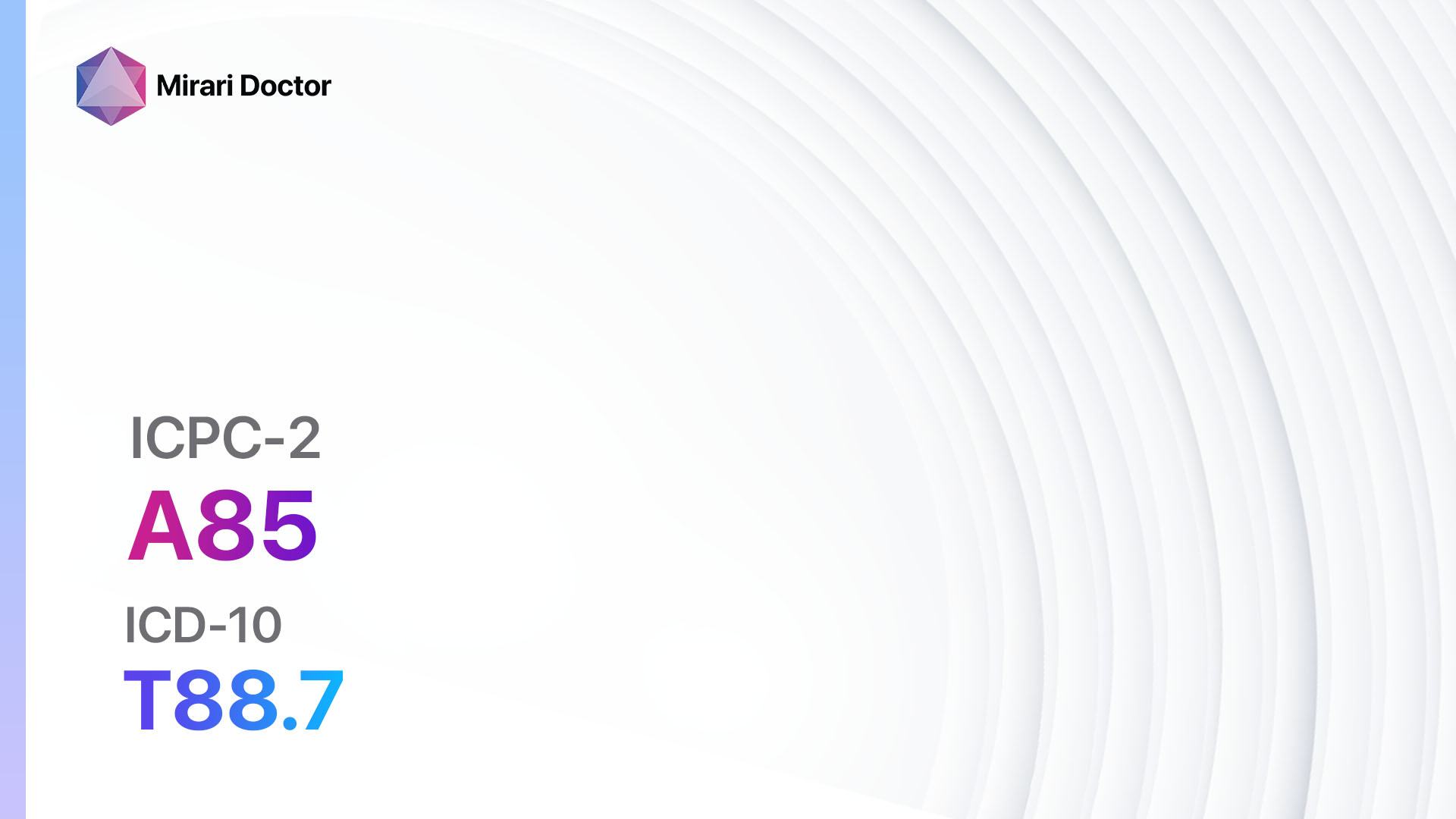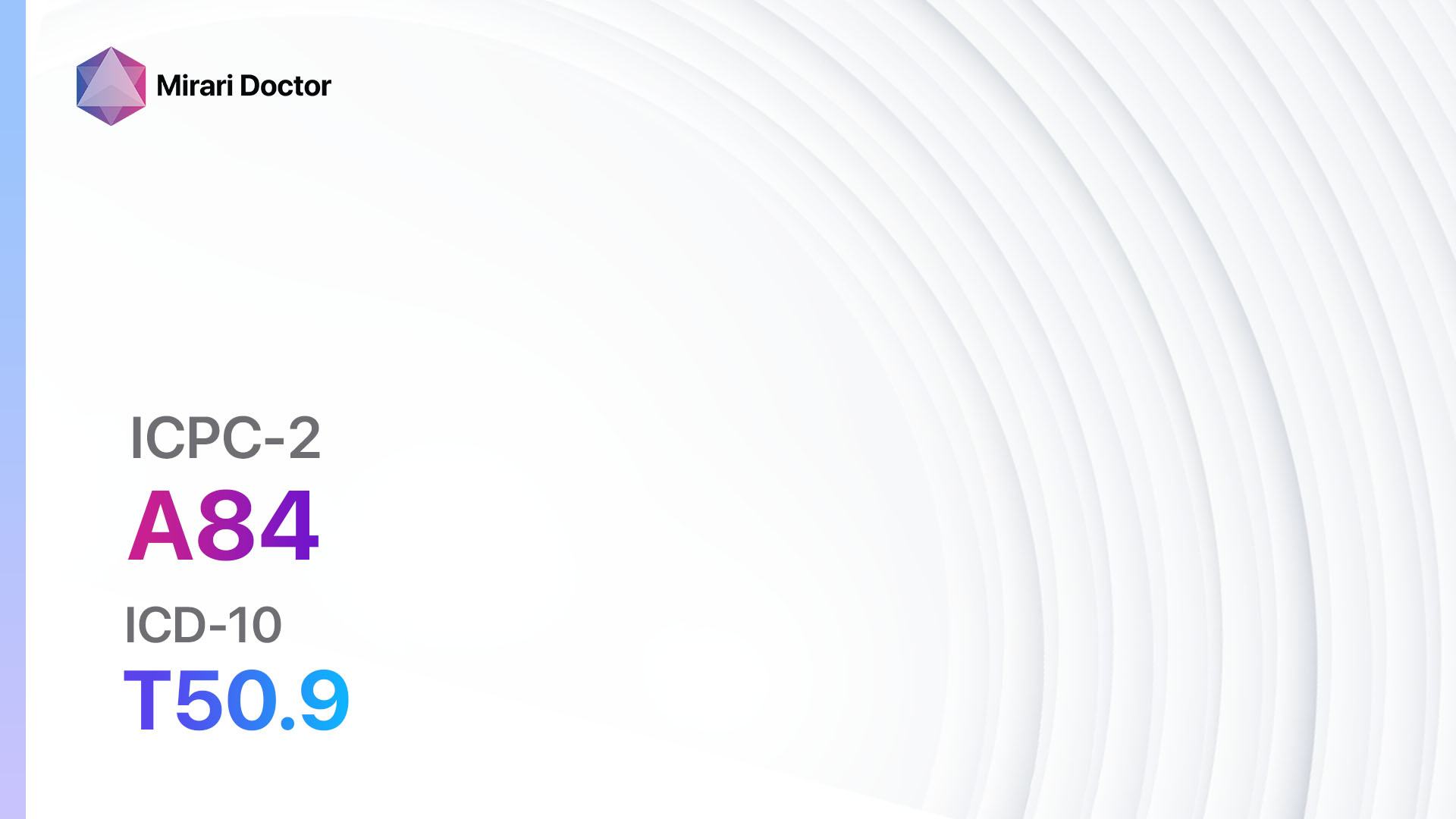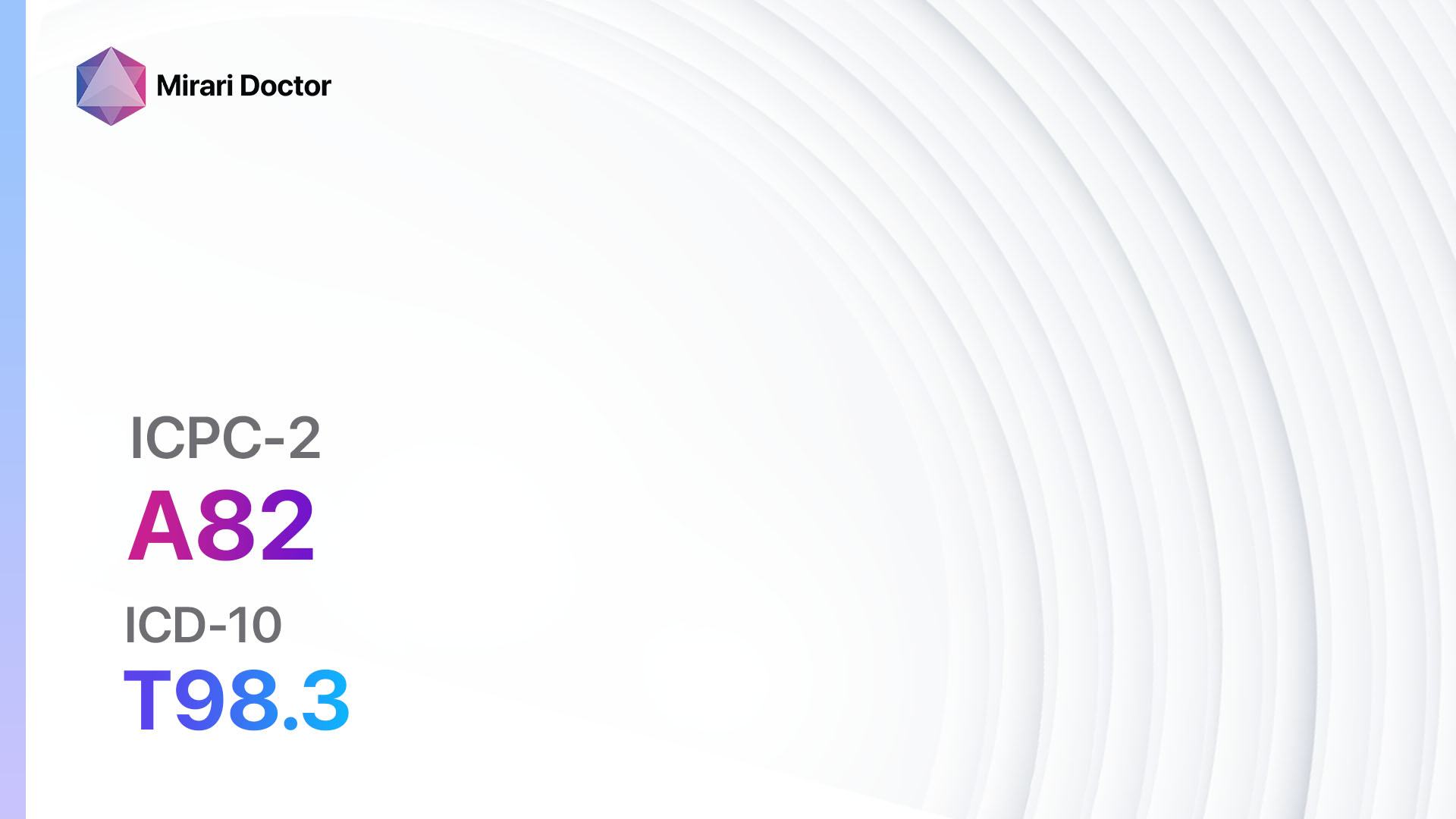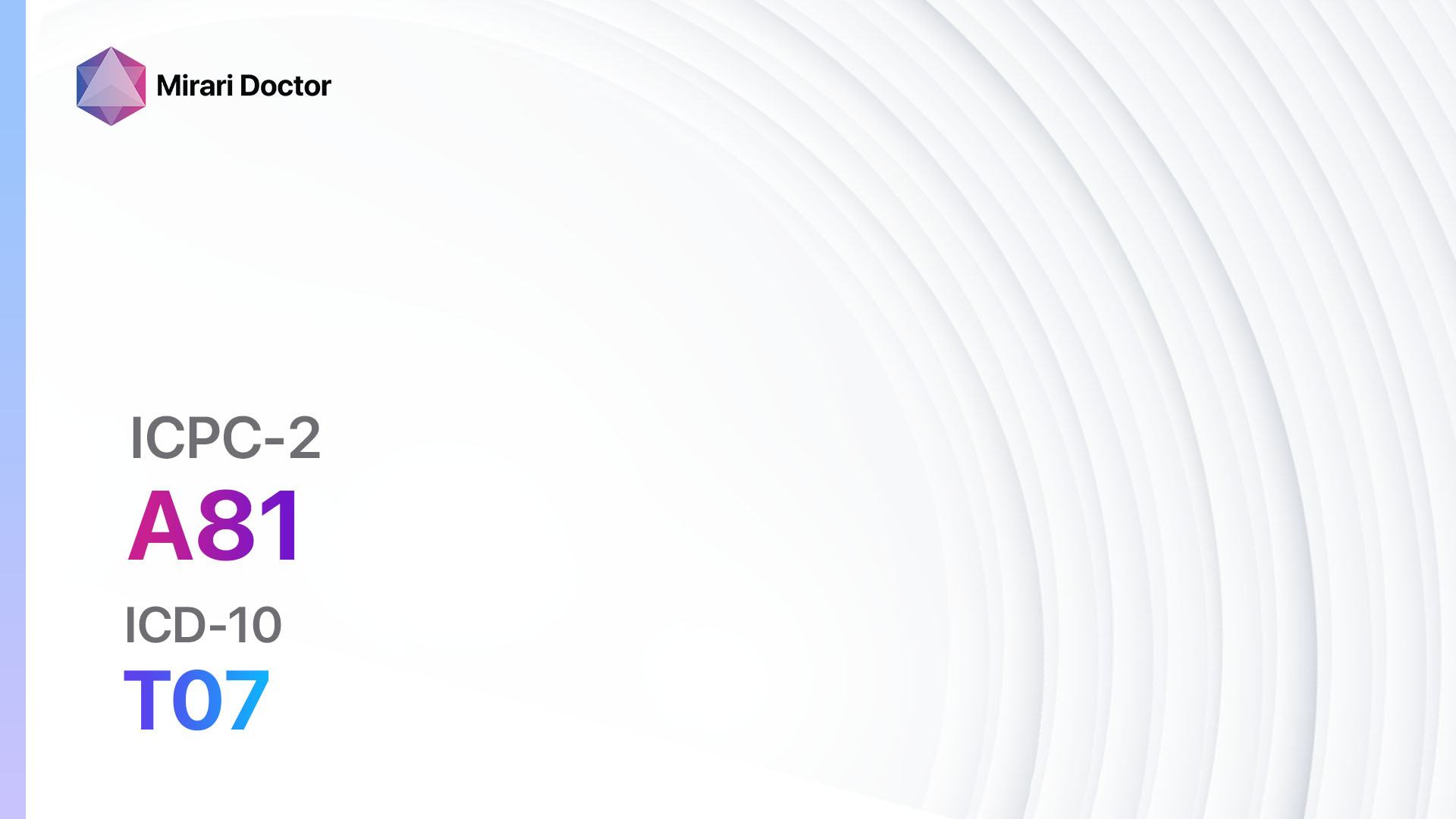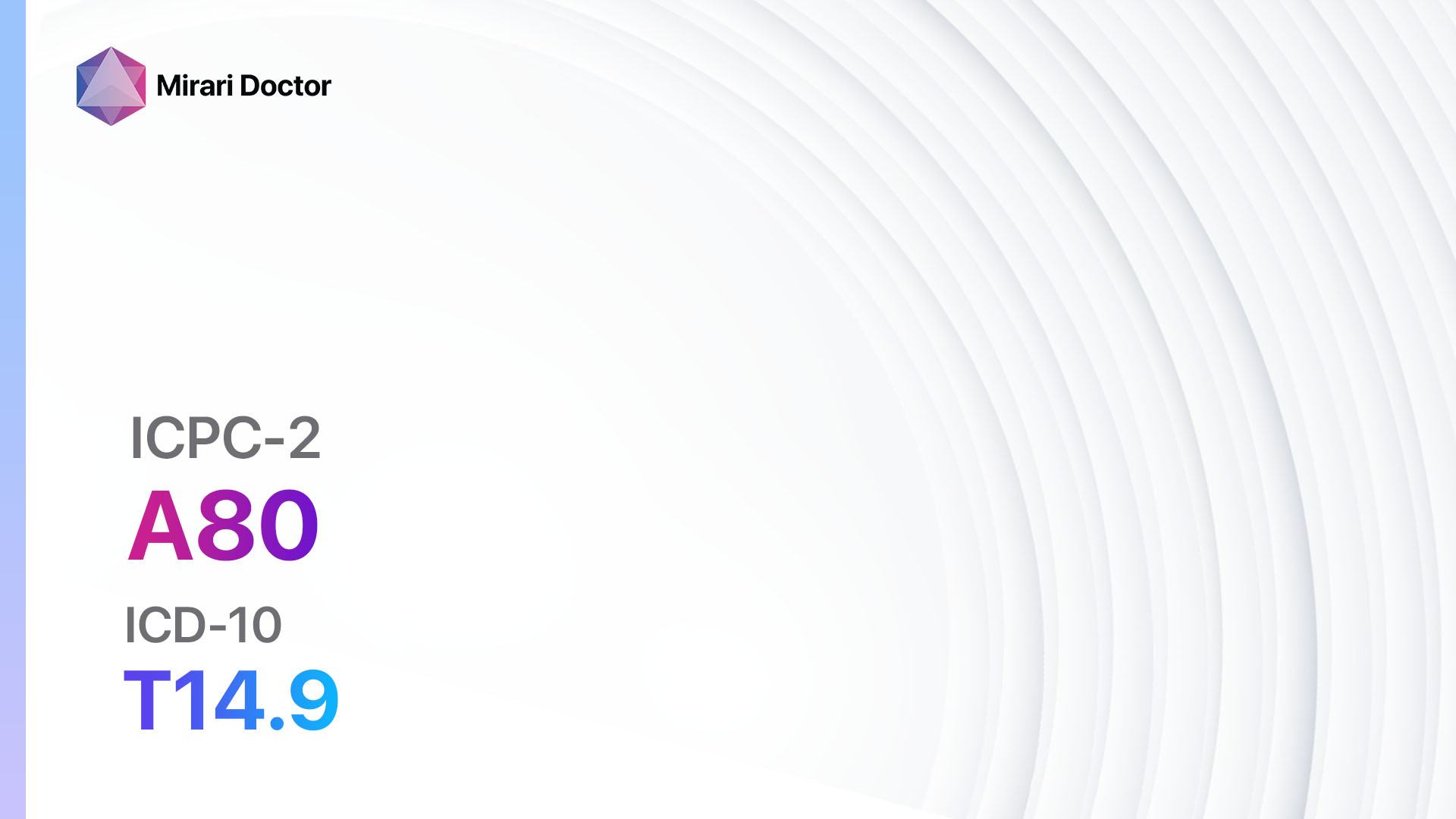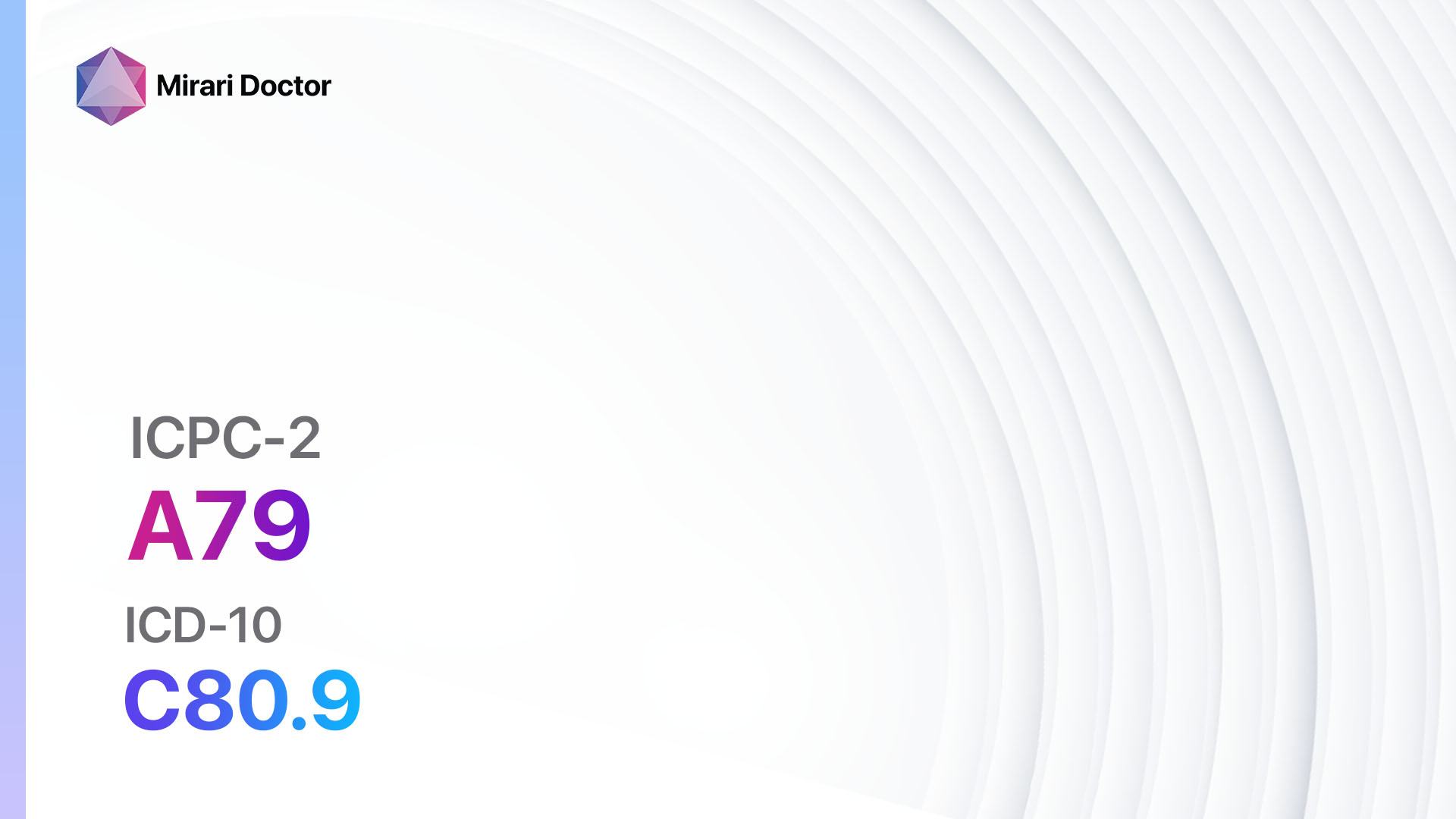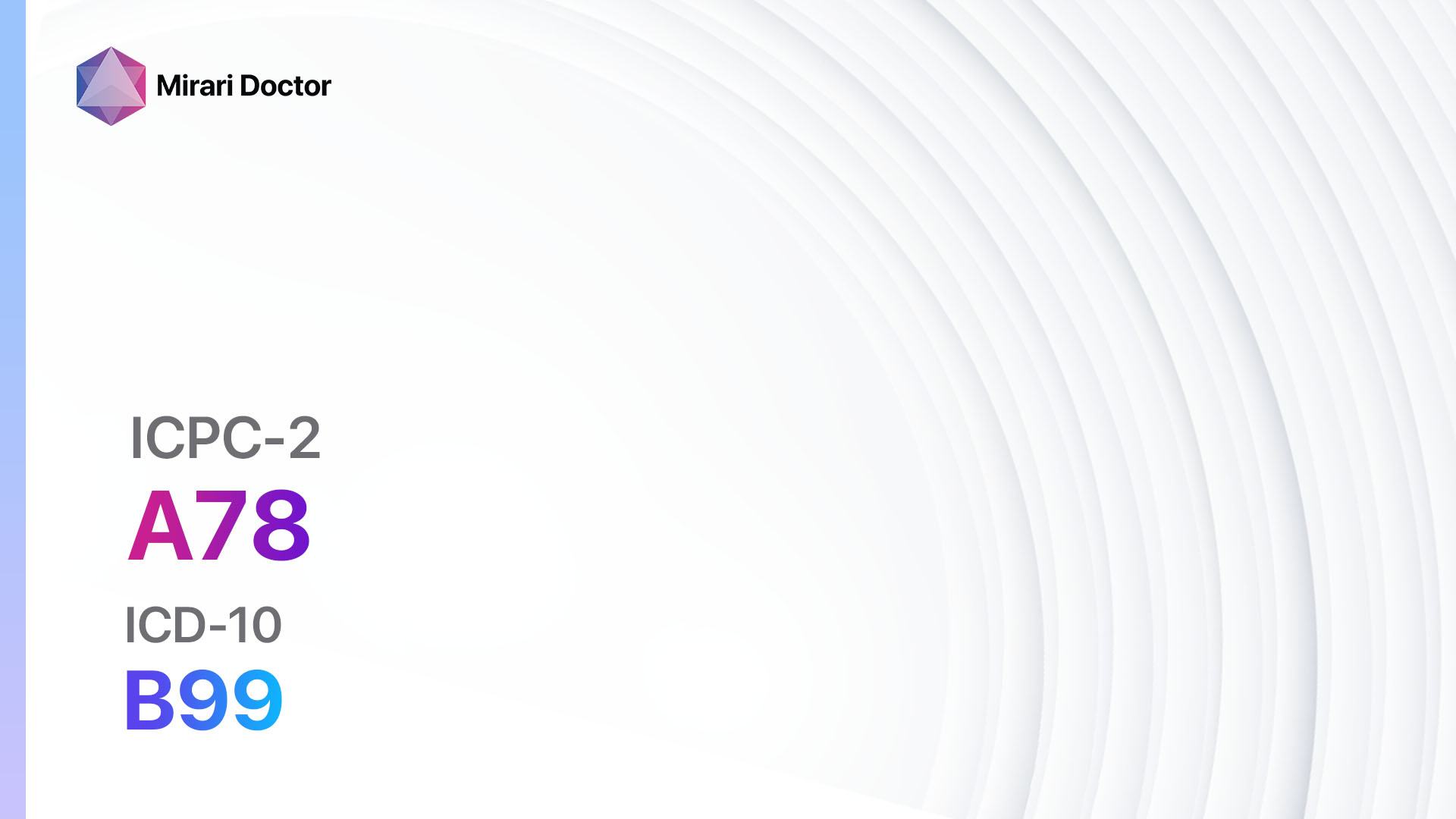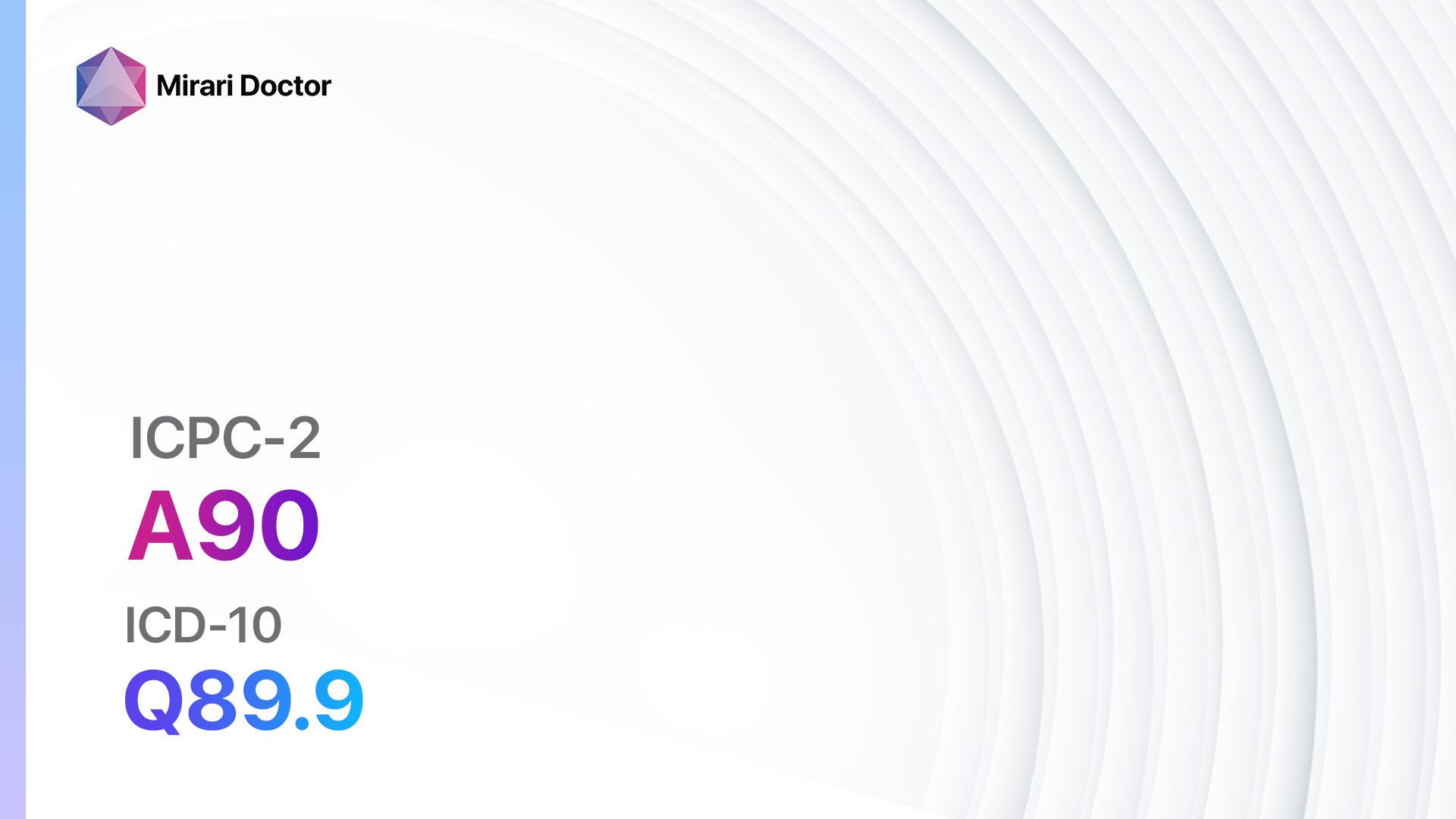
Introduction
Congenital anomaly OS/multiple refers to the presence of multiple congenital anomalies in an individual[1]. These anomalies can affect various body systems and may vary in severity[2]. The aim of this guide is to provide an overview of the symptoms, causes, diagnostic steps, possible interventions, and lifestyle interventions for this condition.
Codes
- ICPC-2 Code: A90 Congenital anomaly OS/multiple[3]
- ICD-10 Code: Q89.9 Congenital malformation, unspecified[4]
Symptoms
- Various congenital anomalies affecting different body systems may be present[5].
- Symptoms can vary widely depending on the specific anomalies present[5].
- Common symptoms may include:
Causes
- Genetic factors: Congenital anomalies can be caused by genetic mutations or chromosomal abnormalities[6].
- Environmental factors: Exposure to certain substances or conditions during pregnancy can increase the risk of congenital anomalies[6].
- Multifactorial causes: In many cases, the exact cause of congenital anomalies is unknown and is likely a combination of genetic and environmental factors[6].
Diagnostic Steps
Medical History
- Obtain a comprehensive medical history, including:
Physical Examination
- Perform a thorough physical examination, focusing on specific signs or findings indicative of congenital anomalies[8].
- Evaluate for any abnormal physical features, developmental delays, or organ system abnormalities[8].
Laboratory Tests
- Chromosomal analysis: This test can identify chromosomal abnormalities that may be associated with congenital anomalies[9].
- Genetic testing: Specific genetic tests may be recommended based on the suspected genetic cause of the anomalies[9].
- Metabolic screening: Some congenital anomalies may be associated with metabolic disorders, and screening tests help identify these conditions[9].
Diagnostic Imaging
- X-rays: Can be used to evaluate skeletal abnormalities or other structural anomalies[10].
- Ultrasound: Useful for evaluating fetal development and identifying specific organ system abnormalities[10].
- CT scans or MRIs: These imaging modalities provide detailed images of internal structures and can help identify specific anomalies[10].
Other Tests
- Echocardiogram: Used to evaluate the structure and function of the heart, as congenital heart defects are common in individuals with multiple congenital anomalies.
- Renal ultrasound: Helps assess the structure and function of the kidneys, as kidney abnormalities are also frequently seen in these individuals.
- Additional specialized tests may be ordered based on the specific anomalies present.
Follow-up and Patient Education
- Regular follow-up appointments should be scheduled to monitor the individual’s growth, development, and overall health.
- Genetic counseling may be recommended to discuss the risk of recurrence in future pregnancies and to provide information and support to the individual and their family.
Possible Interventions
Traditional Interventions
Medications:
Top 5 drugs for Congenital anomaly OS/multiple:
- Folic acid: Essential for proper fetal development. Cost: $5-$10/month.
- Contraindications: None.
- Side effects: Rare, but may include nausea or allergic reactions.
- Severe side effects: None.
- Drug interactions: None.
- Warning: Important for women of childbearing age to take folic acid supplements to reduce the risk of certain congenital anomalies.
- Thyroxine: Used to treat congenital hypothyroidism. Cost: $10-$50/month.
- Contraindications: None.
- Side effects: Rare, but may include headache or palpitations.
- Severe side effects: None.
- Drug interactions: None.
- Warning: Regular monitoring of thyroid hormone levels is necessary.
- Antiepileptic drugs: Used to manage seizures in individuals with congenital anomalies and epilepsy. Cost: Varies depending on the specific drug.
- Contraindications: Hypersensitivity to the drug.
- Side effects: Can vary depending on the specific drug, but may include drowsiness, dizziness, or rash.
- Severe side effects: Rare, but may include liver damage or blood disorders.
- Drug interactions: Many potential drug interactions, so careful monitoring is necessary.
- Warning: Regular monitoring of drug levels and liver function is necessary.
- Angiotensin-converting enzyme (ACE) inhibitors: Used to manage certain heart defects associated with congenital anomalies. Cost: $10-$50/month.
- Contraindications: History of angioedema with ACE inhibitors, renal artery stenosis.
- Side effects: Cough, elevated blood urea nitrogen.
- Severe side effects: Angioedema, hyperkalemia.
- Drug interactions: Potassium supplements, NSAIDs.
- Warning: Monitoring of renal function and potassium is required.
- Growth hormone: Used to promote growth in individuals with growth hormone deficiency associated with congenital anomalies. Cost: $500-$3000/month.
- Contraindications: Active malignancy, closed epiphyses.
- Side effects: Headache, joint pain, fluid retention.
- Severe side effects: Rare, but may include intracranial hypertension or pancreatitis.
- Drug interactions: None.
- Warning: Regular monitoring of growth hormone levels and growth parameters is necessary.
Alternative Drugs:
- No specific alternative drugs are recommended for the treatment of congenital anomaly OS/multiple. Treatment is typically focused on managing specific symptoms and complications associated with the individual’s specific anomalies.
Surgical Procedures:
- Surgical interventions may be necessary to correct specific congenital anomalies, such as heart defects or limb abnormalities.
- The cost of surgical procedures can vary widely depending on the specific procedure and location. It is recommended to consult with a healthcare provider or surgeon for accurate cost estimates.
Alternative Interventions
- Physical therapy: Can help improve mobility and function in individuals with limb abnormalities. Cost: $50-$150 per session.
- Speech therapy: May be beneficial for individuals with speech or language delays. Cost: $50-$150 per session.
- Occupational therapy: Can help individuals develop skills for daily living and improve fine motor function. Cost: $50-$150 per session.
- Assistive devices: Various devices, such as hearing aids or mobility aids, may be recommended to improve quality of life. Cost: Varies depending on the specific device.
- Special education services: Individuals with developmental delays or intellectual disabilities may benefit from specialized educational programs. Cost: Varies depending on the specific program and location.
Lifestyle Interventions
- Nutritional counseling: A balanced diet is important for overall health and development. Cost: $50-$150 per session.
- Physical activity: Regular exercise can help improve cardiovascular health and overall well-being. Cost: Varies depending on the specific activity.
- Emotional support: Individuals and their families may benefit from counseling or support groups to cope with the challenges associated with congenital anomalies. Cost: Varies depending on the specific counseling service or support group.
- Early intervention programs: These programs provide specialized services for infants and young children with developmental delays. Cost: Varies depending on the specific program and location.
- Home modifications: Adaptations to the home environment may be necessary to accommodate the individual’s specific needs. Cost: Varies depending on the modifications required.
It is important to note that the cost ranges provided are approximate and may vary depending on the location and availability of the interventions. It is recommended to consult with healthcare providers or relevant professionals for accurate cost estimates and personalized treatment recommendations.
Mirari Cold Plasma Alternative Intervention
Understanding Mirari Cold Plasma
- Safe and Non-Invasive Treatment: Mirari Cold Plasma is a safe and non-invasive treatment option for various skin conditions. It does not require incisions, minimizing the risk of scarring, bleeding, or tissue damage.
- Efficient Extraction of Foreign Bodies: Mirari Cold Plasma facilitates the removal of foreign bodies from the skin by degrading and dissociating organic matter, allowing easier access and extraction.
- Pain Reduction and Comfort: Mirari Cold Plasma has a local analgesic effect, providing pain relief during the treatment, making it more comfortable for the patient.
- Reduced Risk of Infection: Mirari Cold Plasma has antimicrobial properties, effectively killing bacteria and reducing the risk of infection.
- Accelerated Healing and Minimal Scarring: Mirari Cold Plasma stimulates wound healing and tissue regeneration, reducing healing time and minimizing the formation of scars.
Mirari Cold Plasma Prescription
Video instructions for using Mirari Cold Plasma Device – A90 Congenital anomaly OS/multiple (ICD-10:Q89.9)
| Mild | Moderate | Severe |
| Mode setting: 7 (Immunotherapy) Location: 1 (Sacrum) Morning: 15 minutes, Evening: 15 minutes |
Mode setting: 7 (Immunotherapy) Location: 1 (Sacrum) Morning: 30 minutes, Lunch: 30 minutes, Evening: 30 minutes |
Mode setting: 7 (Immunotherapy) Location: 1 (Sacrum) Morning: 30 minutes, Lunch: 30 minutes, Evening: 30 minutes |
| Mode setting: 7 (Immunotherapy) Location: 4 (Heart, Bile & Pancreas) Morning: 15 minutes, Evening: 15 minutes |
Mode setting: 7 (Immunotherapy) Location: 4 (Heart, Bile & Pancreas) Morning: 30 minutes, Lunch: 30 minutes, Evening: 30 minutes |
Mode setting: 7 (Immunotherapy) Location: 4 (Heart, Bile & Pancreas) Morning: 30 minutes, Lunch: 30 minutes, Evening: 30 minutes |
| Mode setting: 7 (Immunotherapy) Location: 7 (Neuro system & ENT) Morning: 15 minutes, Evening: 15 minutes |
Mode setting: 7 (Immunotherapy) Location: 7 (Neuro system & ENT) Morning: 30 minutes, Lunch: 30 minutes, Evening: 30 minutes |
Mode setting: 7 (Immunotherapy) Location: 7 (Neuro system & ENT) Morning: 30 minutes, Lunch: 30 minutes, Evening: 30 minutes |
| Total Morning: 45 minutes approx. $7.50 USD, Evening: 45 minutes approx. $7.50 USD |
Total Morning: 90 minutes approx. $15 USD, Lunch: 90 minutes approx. $15 USD, Evening: 90 minutes approx. $15 USD, |
Total Morning: 90 minutes approx. $15 USD, Lunch: 90 minutes approx. $15 USD, Evening: 90 minutes approx. $15 USD, |
| Usual treatment for 7-60 days approx. $105 USD – $900 USD | Usual treatment for 6-8 weeks approx. $1,890 USD – $2,520 USD |
Usual treatment for 3-6 months approx. $4,050 USD – $8,100 USD
|
 |
|
Use the Mirari Cold Plasma device to treat Congenital anomaly OS/multiple effectively.
WARNING: MIRARI COLD PLASMA IS DESIGNED FOR THE HUMAN BODY WITHOUT ANY ARTIFICIAL OR THIRD PARTY PRODUCTS. USE OF OTHER PRODUCTS IN COMBINATION WITH MIRARI COLD PLASMA MAY CAUSE UNPREDICTABLE EFFECTS, HARM OR INJURY. PLEASE CONSULT A MEDICAL PROFESSIONAL BEFORE COMBINING ANY OTHER PRODUCTS WITH USE OF MIRARI.
Step 1: Cleanse the Skin
- Start by cleaning the affected area of the skin with a gentle cleanser or mild soap and water. Gently pat the area dry with a clean towel.
Step 2: Prepare the Mirari Cold Plasma device
- Ensure that the Mirari Cold Plasma device is fully charged or has fresh batteries as per the manufacturer’s instructions. Make sure the device is clean and in good working condition.
- Switch on the Mirari device using the power button or by following the specific instructions provided with the device.
- Some Mirari devices may have adjustable settings for intensity or treatment duration. Follow the manufacturer’s instructions to select the appropriate settings based on your needs and the recommended guidelines.
Step 3: Apply the Device
- Place the Mirari device in direct contact with the affected area of the skin. Gently glide or hold the device over the skin surface, ensuring even coverage of the area experiencing.
- Slowly move the Mirari device in a circular motion or follow a specific pattern as indicated in the user manual. This helps ensure thorough treatment coverage.
Step 4: Monitor and Assess:
- Keep track of your progress and evaluate the effectiveness of the Mirari device in managing your Congenital anomaly OS/multiple. If you have any concerns or notice any adverse reactions, consult with your health care professional.
Note
This guide is for informational purposes only and should not replace the advice of a medical professional. Always consult with your healthcare provider or a qualified medical professional for personal advice, diagnosis, or treatment. Do not solely rely on the information presented here for decisions about your health. Use of this information is at your own risk. The authors of this guide, nor any associated entities or platforms, are not responsible for any potential adverse effects or outcomes based on the content.
Mirari Cold Plasma System Disclaimer
- Purpose: The Mirari Cold Plasma System is a Class 2 medical device designed for use by trained healthcare professionals. It is registered for use in Thailand and Vietnam. It is not intended for use outside of these locations.
- Informational Use: The content and information provided with the device are for educational and informational purposes only. They are not a substitute for professional medical advice or care.
- Variable Outcomes: While the device is approved for specific uses, individual outcomes can differ. We do not assert or guarantee specific medical outcomes.
- Consultation: Prior to utilizing the device or making decisions based on its content, it is essential to consult with a Certified Mirari Tele-Therapist and your medical healthcare provider regarding specific protocols.
- Liability: By using this device, users are acknowledging and accepting all potential risks. Neither the manufacturer nor the distributor will be held accountable for any adverse reactions, injuries, or damages stemming from its use.
- Geographical Availability: This device has received approval for designated purposes by the Thai and Vietnam FDA. As of now, outside of Thailand and Vietnam, the Mirari Cold Plasma System is not available for purchase or use.
References
- Feldkamp, M. L., Carey, J. C., Byrne, J. L., Krikov, S., & Botto, L. D. (2017). Etiology and clinical presentation of birth defects: population based study. BMJ, 357, j2249.
- Corsello, G., & Giuffrè, M. (2012). Congenital malformations. The Journal of Maternal-Fetal & Neonatal Medicine, 25(sup1), 25-29.
- WONCA International Classification Committee. (1998). ICPC-2: International classification of primary care. Oxford University Press, USA.
- World Health Organization. (2015). International statistical classification of diseases and related health problems (10th ed.).
- Hennekam, R. C., Biesecker, L. G., Allanson, J. E., Hall, J. G., Opitz, J. M., Temple, I. K., & Carey, J. C. (2013). Elements of morphology: general terms for congenital anomalies. American Journal of Medical Genetics Part A, 161(11), 2726-2733.
- Webber, D. M., MacLeod, S. L., Bamshad, M. J., Shaw, G. M., Finnell, R. H., Shete, S. S., … & Hobbs, C. (2015). Developments in our understanding of the genetic basis of birth defects. Birth Defects Research Part A: Clinical and Molecular Teratology, 103(8), 680-691.
- Bickle Graz, M., Pichon, J. B. T., & Vial, Y. (2016). Diagnostic approach to congenital malformations newly detected in neonates. Revue medicale suisse, 12(510), 442-447.
- Adam, M. P., Ardinger, H. H., Pagon, R. A., Wallace, S. E., Bean, L. J., Gripp, K. W., … & Amemiya, A. (2019). GeneReviews®[Internet].
- Moorthie, S., Blencowe, H., Darlison, M. W., Gibbons, S., Lawn, J. E., Mastroiacovo, P., … & Congenital Disorders Expert Group. (2018). Chromosomal disorders: estimating baseline birth prevalence and pregnancy outcomes worldwide. Journal of community genetics, 9(4), 377-386.
- Whitby, E. H. (2010). Imaging the fetus in the first trimester: the role of ultrasound and magnetic resonance imaging. Imaging, 22(1), 27-35.
Related articles
Made in USA


